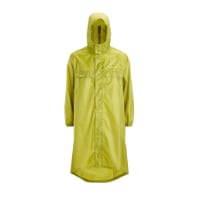Espero
Member
- Time of past OR future Camino
- April 2014
I've worked with FEMA teams in the Pacific in support of natural disasters where the water quality was questionable, and used an electric coil to heat and sanitize water. I'm also quite familiar with alcohol stoves and have used them on ultralite backpacking trips. I like them both and have nothing but praise for both options. Like many on this site, morning coffee or evening soup is a luxury, nay necessity, that I'm not willing to forego. Therefore, I'm weighing the pros and cons of each option for my VDLP trip in April. The pros for the electric coil are convenience, fast water boiling times, and not much fuss. The cons are weight (approx. 7 oz. / 200 g as obtained from various websites), no on trail use, and possible failure due to burning out the element. The alcohol stove pros are weight (0.65 oz. / 18.4 g., Starlyte Alcohol Stove with windscreen, although when you throw in the weight of fuel, the coil and stove are probably equal in this area), reliability, use on trail, dual use of alcohol for health and sanitation (O.K. I know some of you have thought about drinking at this point; not an option). The cons are finding readily available fuel, open flame, slow heating time compared to coil, cost for fuel, possibly not being able to carry an empty stove (of course the fuel is not allowed) in packed luggage. I've also thought about Esbit, but the availabilty of fuel is questionable. My questions to the forum are: what do you use, if you use anything, and why? Can one use open flame stoves in the refugios? BTW, the alcohol stove is spill proof. Thanks in advance for your input.
Last edited:














